I hear it all the time; “I can’t afford to go to the range, so I don’t get any practice.”
Well, I can sympathize, since ammo has gotten so expensive and hard to come by, with only intermittent surplus availability. However, that is no excuse for failing to maintain, or improve your shooting skills.
If you intend to become or remain proficient, you will need to make a concerted effort to master the basics and continually improve.
Several years ago as a competitive shooter I made an effort to improve my skills. At the time I was already putting around 500 rounds a week down range. I realize this is not a lot for some of the top shooters, but for someone on a budget, it gets expensive quickly.
After research and talking to a few top competitors, I discovered ways to improve my shooting skills while saving ammo. Hopefully you can use them yourself, and maybe save a little cash.
Related: 5 Ammo Stockpiling Mistakes You Are Probably Making Right Now
Practice Your Shooting Skills
I often talk to people who think quantity equals quality. Putting hundreds if not thousands of rounds down range is going to make you the best thing since sliced bread…well, maybe.
You have probably heard the saying, “Practice makes perfect.” I had heard it myself and always thought it to be true until I read one book written by Dan Millman.
The one thing I took away from that book is the saying “Perfect practice makes perfect.” If you think about it, it makes a lot of sense.
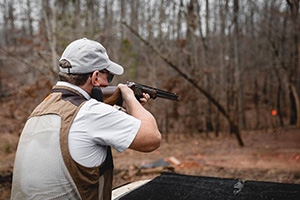
If you have bad technique and are making small mistakes in your shooting, you only reinforce those mistakes with every round you put down range. A slower, less round approach, with perfect technique will build muscle memory of the right way to do things. Slow and steady will win the race when it comes to technique.
After you have your reps in, then it is time to up the speed and quantity, if you have the ammo for it.
I know most people want to head to the range and blast away, but what are you really accomplishing?
Clone Your Guns
There are a few guns out there that will allow you to buy a .22 LR and accessorize it just like your main firearm. This will allow you to practice just about everything with this cheaper alternative, and even get a lot of trigger time, all while saving quite a bit of money.
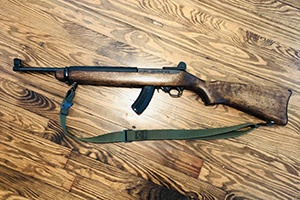 For example, a Ruger 10-22 and mt accessorized to give you the feel of a mini 14. 1911’s can be bought in .22 LR, and Ruger offers a 22 RL with the same grip angle as the 1911. This can be done with an AR platform and to some extent an AK. Even with 22 LR being sometimes scarce, it is still much cheaper than full power ammo.
For example, a Ruger 10-22 and mt accessorized to give you the feel of a mini 14. 1911’s can be bought in .22 LR, and Ruger offers a 22 RL with the same grip angle as the 1911. This can be done with an AR platform and to some extent an AK. Even with 22 LR being sometimes scarce, it is still much cheaper than full power ammo.
Some people have 22 LR adapters for their firearms. I don’t have one and have heard mixed results on reliability from those who own them.
A Ruger Super Blackhawk feels remarkably similar to a Blackhawk and even a Single Six. You can practice with the 22 LR Single Six and feel confident in shooting its bigger brothers with only slight adjustments.
I know an extra firearm just for practice is quite an investment, but another great use and valuable training is to use these training arms in small game hunting. This gives you field time that is almost always better than range time.
Practice With Little or No Ammo
Back when I was a competitive shooter, I tried to dry fire my 1911 two or 300 times a night as I watched TV. I also practiced drawing, getting a perfect sight picture and dry firing.
Another drill I did was reloading. I would cycle through all my mags, just dropping and reloading with a fresh one. Most of this was done in front of a mirror so I could catch any major problems.
Then it was on to malfunction drills.
Everyone needs to practice malfunction drills. If you don’t believe it, watch the video of the female police officer shooting the knife wielding man who attacked her. She was backing up firing her Glock, (Yes Glocks fail too) when it jammed. With her good training she cleared the jam and continued firing to stop the assailant.
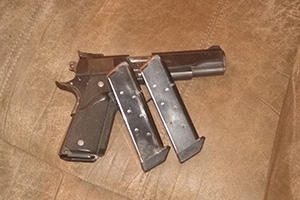 My extensive training experience is on the 1911 platform, but the training can be translated to any handgun or rifle you wish to use.
My extensive training experience is on the 1911 platform, but the training can be translated to any handgun or rifle you wish to use.
A few different companies make special dry firing cartridges for firearms, just so you don’t break things internally while dry firing.
When you are using dry firing cartridges, you can practice coming from carry position to perfect sight alignment and your first shot. Perfect practice = good muscle memory.
Some drills you can do to save ammo but actually fire rounds allow you to get some recoil practice, because that is important as well.
- Carry to perfect sight alignment and first shot on target.
- One shot, reload, followup shot on target.
- Double tap on target, reload, repeat.
These practice sessions will save you a lot of ammo vs blasting down range, with the added advantage of them making you having better shooting skills.
These drills are just the tip of the iceberg of what can be accomplished with little or no ammo expenditure. Do some research, pay for some training, then use your savings to buy another gun, or a case of ammo.
What To Buy For Keeping Shooting Skills In Shape
Some will argue that you should practice with what you carry with you in your gun. I will agree to a point. You need to make sure the ammo you carry in your gun cycles without a problem. This will mean shooting several boxes to make sure it runs smoothly without jams.
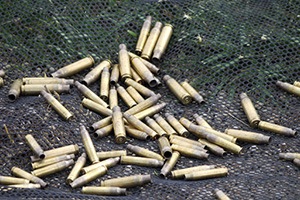 For handguns, I recommend whatever premium defense round that runs through your gun. Once you have this figured out and sighted your handgun in with it, you can start looking for a cheaper alternative for practice. The important point is that it shoots to the same point of sight as your premium ammo.
For handguns, I recommend whatever premium defense round that runs through your gun. Once you have this figured out and sighted your handgun in with it, you can start looking for a cheaper alternative for practice. The important point is that it shoots to the same point of sight as your premium ammo.
You may have to search through a few brands to find one like this. It also may not cycle in your weapon as well as the premium stuff. You can look at this as extra malfunction training, or you can keep looking.
As far as long guns, I recommend buying for your planned usage. Just like the handgun, make sure your weapon likes the ammo you plan to feed it.
How To Store It
Storing your investment can be a little tricky.
I have seen ammo coated in the green goo of corrosion, because moisture got to it.
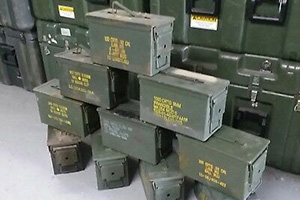
Some of the best storage I have seen is surplus military ammo cans.
They are airtight (mine vacuum sealed when I moved from high altitude to a lower altitude), waterproof and will contain any accidental explosion (a friend had 50 BMG stay inside the can during a house fire).
With ammo at a premium, any way you can actually improve your shooting skills while saving ammo and money needs to be looked into. I’ve done it this way for years, and my shooting skills are still pretty sharp.
You may also like:
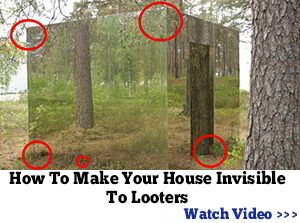 Ammo Storage Tips Every Prepper Should Know
Ammo Storage Tips Every Prepper Should Know
This Hidden Survival Garden Will Keep You Well Fed When SHTF (Video)

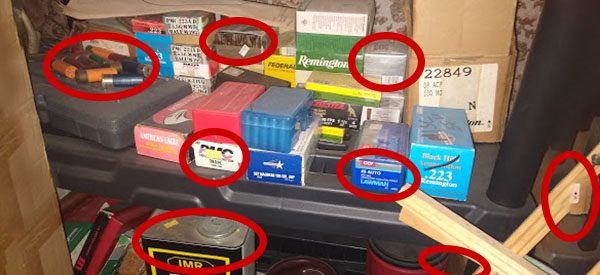













-Once again, you have made a lot of sense. I would also say that while you are one of the folks who believe that the 22LR is a good choice for practice of a similar larger ammo weapon, I think the 22LR is a fair weapon in it’s own right for a Prepper….even for home defense. IF, you are proficient with it. A couple of good head shots, and you are going to put your attacker/Looter down, and the ease of shooting (accuracy) of the 22LR may allow that more so than a larger cartridge….and all the way around, you are saving money.
Keeping shooting skills, does require a lot of practice, and ammo is not cheep. I started shooing a a very young age, and have been doing it for about 60 years. Competed in youth matches, indoor 22 LR rifle, added pistol in a couple of years, then added rifle matches, about 13 or 14. .When I enlisted, shot in services matches. One thing I was learned at a young age, was that of dry firing. Dry firing can be used in more that just handgun matches, It can be used in Rifle and Shotgun Matches. In Trap or Skeet it helps you with swing, cheek weld, sighting, and trigger control. Does the same thing for rifle, both match and hunting. you still need to shot a few rounds to keep yourself up to feeling the recoil. I was a firearms instructor, for law enforcement, and others.
I would second Randy’s suggestion about dry firing.
While top professional shooters do spend lots of time sending lead down range, when questioned about their practice habits they all say they spend far more time dry firing their firearm than they do live firing.
If you have the bucks and want to upgrade your dry firing, there are laser sets on the market that will record your dry fire shots and display them on your phone. That gives you the best of both worlds, you get lots of reasonably priced practice in and know exactly where your shots are going.
If you have a striker fired semi-automatic you can buy cords that will fit the chamber of your firearm and protrude out the muzzle so that you can visualize that the firearm is safe. They are not quite the same as feeling the striker release and fall but they allow you to operate the trigger through the full length of its stroke without recocking each time.
I only suggest them as a means of dry firing with a striker initiated hand gun.
I practice reloading but do not use live ammunition. I use what are called snap caps as the author suggested. Snap caps let you practice clearing your weapon and practice shooting with a striker fired pistols where you get the feel of releasing the striker. The down side to using snap caps with a semi-automatic is that they get ejected everywhere and they always wind up under something. You can buy nets that go on your hand to catch the ejected cartridge much like a batting cage but I find them kludgey. They do work, I just haven’t made up my mind which is more aggravating, looking for ejected snap caps or messing with the hand cage. Midway carries them as do other shooting supply houses.
For my revolvers and I am a revolver inclined shooter. I prefer them over semi-automatics. Both have advantages and disadvantages. The revolver’s biggest advantage over semi-automatics is that they are not ammunition sensitive.
With a .357 magnum revolver you can shoot flame emitting, teeth rattling magnum loads that will satisfy the most dedicated masochist among us or shoot 148 gr. hollow based .38 sp. wadcutters loaded down to about 500 feet per second for superb match accuracy. They all cycle fine through your S&W .357 Model 10 just fine. Try that with your Glock.
On the other hand, it is comforting to know that you have 17 in the mag plus one in the chamber and another 17 in a mag in a mag holder on your belt. Thirty-five rounds just in case it’s one of those days. That’s almost six reloads with a 6-shot cylinder and five with an 8-shot cylinder of .357. I’m certainly no Jerry Miciluk who can get off 12 shots in his .45 acp S&W in under 20 seconds. Even Jerry would be hard pressed to keep up for 35 rounds.
I do practice using speed loaders in my revolvers. While it isn’t quite the same as slamming home a fresh magazine, it does help speed up reloading. BUT IT DOES TAKE PRACTICE!
You would be amazed at how fumbley one is trying to do a simple task such as inserting six rounds into their respective receptacles, twisting a knob and withdrawing the holder. Sounds simple, doesn’t it? Try it a few times. It’s trickier than you think and that is standing in my garage with nobody shooting at me or coming at me with some other instrument like a knife or baseball bat.
If you choose a revolver, practice, practice, practice with the speed loader for your particular firearm. Make sure you have more than one. If you drop it while attempting to reload it is much quicker to grab another one out of its holder or your pocket than to go scrabbling around on the ground trying to retrieve the one you dropped.
In addition, depending upon the surface you are standing on, it may now be jammed with sand or mud or any number of different items that can impede the smooth functioning of the device. You won’t always be standing on dry, clean pavement. If you are on an uneven surface you can bet your last dollar it will roll away from you.
With dry firing, you can be ready on the line in just a few minutes. My gun club is 45 minutes by motor vehicle from my driveway to the entrance to the club. That’s an hour and a half wasted watching the scenery which I have seen numerous times go by that I could be home dry firing and still have time to trim the bushes.
The one caveat I would mention about dry firing is that one cannot dry fire most .22s without snap caps. Because the .22 and its related rounds, the .22 magnum and some .17s have their primer in the rim of the cartridge case instead of in the middle —rimfire vs. centerfire— the hammer or the striker hits the cartridge on the edge of the rim and compresses the primer between the hammer/striker and the wall of the chamber. Continuous dry firing of most .22s will result in either a damaged firing pin or the wall of the chamber will get battered or both. It depends on which is the harder metal which gets battered. Usually both exhibit some evidence of battering.
Rather than take a chance on damaging your .22 firearm, in dry firing with a .22, either use a snap cap or use a fired .22 case in the chamber. Eventually the .22 case and the snap cap too will be battered beyond use. It’s time to change.
Pachmayer sells 24 plastic .22 snap caps for a nominal sum. They can be reused, so they turn out to be quite economical to use. They are especially useful in dry firing a semi-automatic .22 because they will feed from the magazine whereas an empty case in most instances will not feed. Advantage revolver. you can load empty cases in your .22 revolver and dry fire until your trigger finger falls off and you don’t have to go looking for ejected cases.The Packmayer product is international orange, so they stand out when they roll under the workbench.
As a former Army Reserve Pistol team coach, I found a GOOD air pistol (air pistols are used in OLYMPIC competition) great for training range is 10 meters (33 feet). I use a .22 lr bullet trap with NRA air pistol targets (you can copy them on your computer printer) Note: Ten ring is about the size of an asprin.
Well, talk about good timing. Just after I posted my first text I got an e-mail from bloksafety.com, the folks who sell the muzzle device I talked about..
They are having a Black Monday sale on their devices. you can view them at bloksafety.com. I might add that some semi-automatics will not override the faux cartridges. My S&W 9 mm Shield would not. I had to take a rat-tail file to it to file away enough material to utilize it. I did manage to make it work satisfactorily. The advantage of their system is that you don’t have to go retrieving the snap caps. You can work the slide and re-cock the firearm and not have the snap cap go sailing off to disappear under the refrigerator in the garage or under the dresser if you are practicing in front of the mirror in the bedroom.
Not affiliated with Blok Safety in any way. Just a product that many may not know about that I found worked satisfactorily after I adjusted for my own particular firearm.
Another option for dry firing that I am trying out (just ordered a couple days ago and waiting for it to come in the mail) would be the laser target from itargetpro. com seems a little pricey up front but you can see how accurate you are shooting without going through a bunch of ammo which will save you money in the long run.
I can’t afford ammo or range fees. Instead, I have a crimson trace laser.
But unless you dry fire with the crimson trace, in a situation of extreme urgency you are going to be all fumbly and think that you have 17 thumbs as you try to turn on the laser and focus on your target. Have you kept track of the last time you checked the battery to make sure it is still live? Have you even zero’d your laser to make sure that the bullet is going to hit where the laser is pointed?
I mounted a saddle laser on my shotgun and using a bore sighting laser found that the saddle laser needed to be adjusted by about 6 inches.
Randy, good subject. I would add that if a bb gun is available in the same model you should buy it now. I would have laughed at the idea until recently. They work well. Over the weekend I tried the Sig 365 co2 pistol and it was actually close to the real thing. I also recommend buying the 22 version or conversion kits as well.
My Dad took me out learning to hunt and fish when i was around 6, but his PTSD got bad enough (B-24 gunner in Europe) that he couldn’t be around guns or stand to kill anything even if it was just a catfish. So I grew up pretty indifferent about guns, strong 2nd amendment supporting liberal but very basic experience. So I wonder how much practice one needs. Guess it depends on what you want. I watched a great hour long interview with White Feather, they asked him how often a shooter needs to shoot to keep his skill level good, he said once a week at least. But this is one of the greatest Riflemen in history. If I ever shoot anybody it will be up close and personal. Cops with training hit, what is it, everything but their target 80% of the time in a real life shooting?
LCC posts his preference for revolvers but notes the difficulty in reloading. When Coffee Jack’s Texas Rangers got their cap and ball Colts for the Mexican War they dealt with the impossibility of reloading by carrying 2 or 3 pistols in an attack.
When Michael Jordan was at the top of his form. On “days off” he shot 500 shots each day at the basket. Just natural talent, I guess.
The Texas Rangers also carried loaded spare cylinders. With a single action pistol, the cylinder slips out quite easily. What old time shootists with single action pistols would do prior to going into action was to load extra cylinders and slip the empty one out and the loaded one in.
Almost as fast as the fabled New York Reload (having two or more pistols as you indicated the Texas Rangers did.) Maybe we should call it the Texas Rangers Reload.
Having extra cylinders was a lot cheaper than buying extra guns and having each gun shoot to a different point of aim. “Let’s see, is this pistol B or pistol C which shoots to the left?”
Now that I get to thinking about it, I wonder if using a single action pistol with multiple pre-loaded cylinders for it would be faster shooting a revolver than reloading a double action revolver with “speed” loaders which are “speedy” only for the physically adept (or the very well practiced shootist).
I haven’t made a study of it, but it is my understanding that the national hit percentage for street cops is 19% which corresponds roughly to everything else 80% of the time.
Unless the cop is into competitive shooting and shoots on his own time and his own dime (well those days are gone forever) he generally, by all departments that I am aware of and I believe generally across the U.S., is only required to qualify with his weapon once a year. If he does not qualify he has to spend extra time with some coaching from better department shootists to bring his score up to qualifying. If he can qualify on his first try, he is done for another year.
Back when I was a weekly attendee at the Orange County Sheriff’s Range, we shot NRA Pistol targets but only slow fire at 50 yards and timed fire at 25 years. We didn’t shoot rapid fire as we weren’t allowed to shoot rapid fire unless the range officer was in personal attendance. It was easier to get the whole camel into the tent than it was to get the range master to supervise our firing.
When the cops came up to shoot they had to qualify on the PPC course which was fired from different distances and from standing and kneeling behind plywood “cover.”
I never shot PPC so don’t know the precise details of the course.
I’m confident that when Carlos Hathcock talked about shooting once a week, he was talking about the Marine Corps standard course of fire which is at 200 yards Standing slow fire and sitting rapid; 300 yards sitting & kneeling slow fire and prone rapid and 600 yards which is prone slow fire. Two sighters for each position, A total of 60 rounds of scored fire and 12 rounds for sighters. Yeah, once a week would keep one in the game. That was with a .30-06 if you were a sniper and the 5.56 if you were Joe Grunt.
600 yards is a challenge with the 5.56 but I fired National Match when I got out of the Marine Corps which mimics the USMC course of fire and there were guys with AR15s who regularly fired near possibles with them and that was shooting only once a month. Although I suspect some of the better ones were firing at other ranges more than once a month, more like three out of four weekends a month.
The shooting dictum is that a pistol requires more frequent training to maintain the same level skill as one has with a rifle. I think there are too many variables in that to make a a positive statement. I have more experience firing a pistol than I do a rifle and out to 100 yards I am about as good offhand with a pistol as I am with a rifle. I haven’t compared kneeling or sitting or prone positions pistol vs. rifle. That is not to say I am an X-ring shooter with both firearms at 100 yards. I will hit a human sized figure as many times with a pistol as I will with a rifle.
Shooting a pistol at targets 100 yards distant is not so difficult as to be impossible with practice, a well-tuned gun and more practice. Every weekend somewhere in the country there is a silhouette match fired with pistols out to 200 meters which is slightly further than 200 yards and some of those shootists who regularly (every weekend) go to matches can clean the 5 rams at 200 meters. To clean the ram it is necessary to knock the 75 pound steel ram over. It is not sufficient to just hit it. It must be knocked off the rail. It is with chagrin that one watches the ram quiver from the hit or turn slightly but not turn enough to fall off the rail.
The .44 magnum is favored in the standing revolver class and at one time the .357 maximum was going to be the darling of the revolver class. Alas, .357 maximum was beset with technical problems and soon faded from the scene.
By the way, anyone interested in 500 brand new, never loaded or fired .357 maximum cases? Make you a real deal on them. I hope it’s only 500. I have a feeling it is more like 1,000. Haven’t checked my stock of them in some years.
My hat is off to your Dad. A B-24 gunner in WWII saw some really heavy duty combat. E, B, Sledge, when he came back from the Peleilu and Okinawa campaigns only hunted once and never again after that. He had been an avid hunter before the war. His family grew up hunting birds and game. Peleilu and Okinawa cured him of killing. In his follow along book he talks about his hunting expedition after the war and how he was so close to the deer but just couldn’t bring himself to shoot it.
If you look at his photo in his book With The Old Breed, you will see young man with the typical thousand yard stare so common among the men who had undergone the island campaigns.
Mike, if you have not regularly shot the handguns and rifles that you have for self-defense, I would urge you to start with ten minutes a day of dry firing. When you can arrange it, go to a range and shoot the gun with the ammunition you would use for self defense. U.S, guys like to think they are all natural Dead-Eye Dicks but like shooting baskets or hitting a golf ball or any other hand-eye coordination task, it takes lots of practice. IF you can afford it, get instruction from a certified instructor.
Try to stay away from Joe Macho instructors. If the instructor makes iron-clad statements, he is probably a fake. As I try to point out in statements made on this site, if it is absolutely only one way, my way, it probably is hokum. If you can’t afford a private instructor, get a good book on pistols shooting or rifle shooting and follow it and practice. It is good practice with good shooting habits that will make you a proficient shooter.
I always start my students off with a .22. Unless they have their own weapon that they really want to shoot, I prefer to use a .22 that I know will shot where it is aimed. That way if they are not getting the hits I think they should be getting I know it is not the gun that doesn’t like the ammo but the shooter who is not following good shooting technique and I can adjust their stance, hold, sight picture or whatever from a know start. If they insist it is the gun I can demonstrate to them it is not the gun because I know the gun will shoot where I aim.
I would suggest that if you take lessons or just practice, start with a .22. It is easier to develop good habits with the .22 than the manly plus P loads or a .44 magnum. It is hard to break bad habits once they have become habits.
If you think you may have to use a gun in self-defense, I would urge you to practice. You can practice dry firing with your 7.5 inch Ruger Super Redhawk and watch carefully to make sure you are not developing bad habits. Dry firing with a big heavy, long barreled gun will develop the muscles you need to hold your other firearms. While the perfect trigger is the holy grail of shootists, a lot of folk have been satisfactorily shot with a really crummy, heavy, gritty, wobbly trigger. It just takes more practice.
Being a sniper is one thing but it’s just awesome to me that Marines qualify at 600 yards with iron sights. Thanks for writing me a top notch article for free, good stuff, good advice.
In boot camp you get a lot of personal attention from the DIs if they think you are in danger of not qualifying.
Out of boot camp if you are having difficulty qualifying the company gunney will take you in hand with personalized instruction. There is lots of incentive to induce you to be one of the group “Every Marine A Rifleman.”
Kids don’t get enough of that personal attention these days.
One of the best things you can do to become more proficient in shooting is to dry fire. Purchase some “plastic” bullets and practice loading your magazines, firing, and aiming often. If you can not get an instructor to help you get started, watch some of the videos on Utube. Forget those using .44 magnums, dressed in camo, and the likes. Paul Harrell is a great place to start on YouTube. Learn to shoot with both eyes open, and FOCUS ON THE FRONT SITE. I almost forgot. The NRA has three (actually 4) rules of safety. Find out what they are and embed them in your mind. That’s it. And, a .22 is a great way to get started.
i’ve seen people at the range top off or put a fresh mag in when the current one is almost empty…i stopped doing that long ago because i wanted the reload practice…so no matter the drill or qual, i don’t care how many are left, i’ll go through the reload, even if it’s my last shot, i’ll reload an empty mag just for the reps…
I practice in n my back yard with a .22 pellet pistol. It’s the kind that you pump so no CO2 cylinders. Very inexpensive, can be done daily and keeps the sighting and hitting the target skills sharp.
Best practice in the world for sight picture breathing and trigger control.
Just so long as you don’t try to pump up your 9 mm Sig Sauer 226 when push comes to shove.
When your brain freezes up you revert to what you do all the time. That happened to the CHP officers when they engaged some hard core criminal shootists. They bent over to police up their brass in the middle of a fire fight to their deadly disadvantage. They had trained to police up the brass after each leg of NRA pistol or even the PPC course, so when their brains went into neutral during a fire fight they reverted to the way they trained and picked up their brass in the midst of the fire fight. The bad guys never bothered to pick up their brass ever and they unfortunately prevailed over the CHP officers.
That introduced a dramatic change in the way police officers in the PDRK trained on the range. Just as the Florida shootout changed the FBI view on guns and ammunition. The Hollywood shootout introduced .223s in the trunk for every cop car in the PDRK.
The cops reponding to that shootout borrowed 5.56 AR15s from a gun store not far from the shootout scene. To the utter disgust of shooters everywhere they lost their FFL due to lending out the guns without filling out the paper work necessary for such a transaction. The BATF shut them down permanently. No good deed goes unpunished.